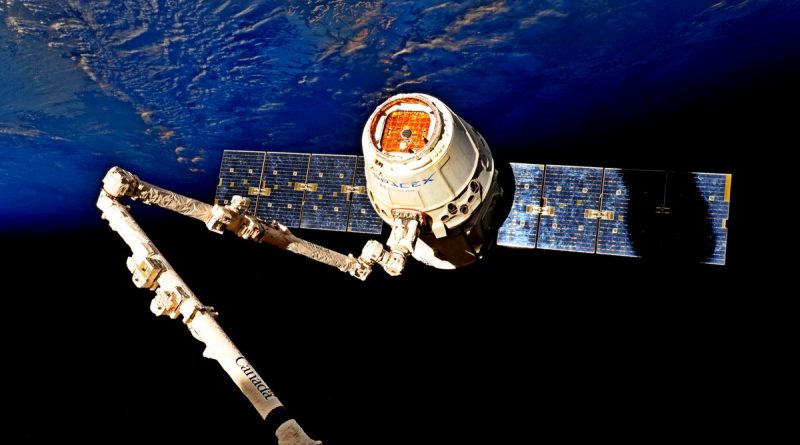SpaceX Dragon Parachutes to Pre-Sunrise Splashdown, capping First Re-Use Flight
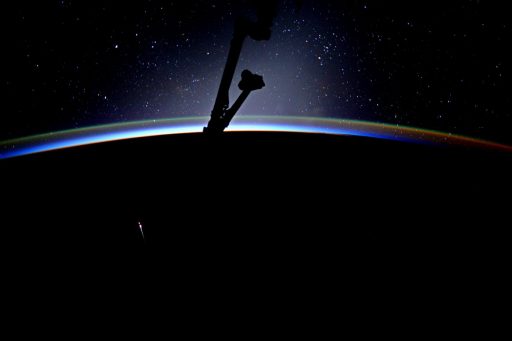
SpaceX’s first Dragon re-use mission successfully concluded on Monday with the spacecraft parachuting to a safe splashdown landing in the Pacific Ocean to return nearly two metric tons of science and hardware from the International Space Station. Monday’s splashdown landing marked the end of a 29-day and 16-hour mission, bringing this spacecraft’s total time in space to 64 days after an earlier visit to ISS back in 2014.
Splashdown was confirmed by SpaceX at 12:14 UTC in the intended landing zone around 420 Kilometers from the Californian coast, marking the first nighttime landing of the Dragon spacecraft, occurring roughly one hour before sunrise in the landing area where teams were pre-staged after splashdown was moved from Sunday to Monday due to unfavorable weather in the original recovery zone.
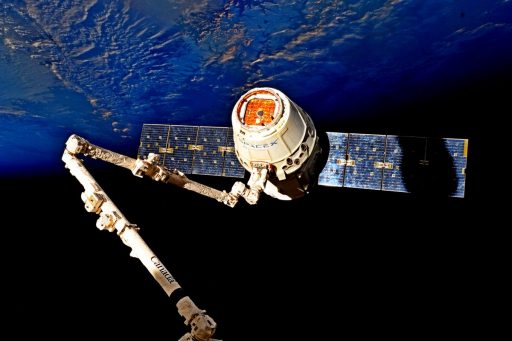
Over the course of its month-long stay, the Dragon delivered 2.7 metric tons of cargo to the Space Station including three high-profile external payloads and dozens of science experiments to be performed by the Station’s crew. For landing, the craft held some 1,860 Kilograms of equipment, the majority of which being performed experiments and samples that will be rushed to NASA for distribution to their home institutions in the shortest time possible after Dragon returns to shore.
SpaceX’s eleventh operational cargo mission began back on June 3 with a successful launch atop a Falcon 9 rocket that delivered the Dragon into Low Earth Orbit and returned its first stage to a powered landing at Cape Canaveral’s Landing Zone 1 to further SpaceX’s re-use aspirations. The first stage was not the only re-use element involved in this mission, marking the first time a Dragon flew to space for a second time. Dragon C106 spent over 34 days in orbit in September/October 2014 as part of SpaceX’s fourth operational ISS mission, facilitating the delivery of 2,216 Kilograms of cargo.
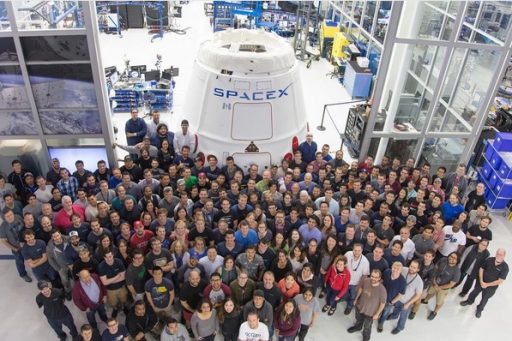
The SpX-11 mission served as a demonstration for future Dragon re-use missions per an agreement SpaceX worked out with NASA, modifying the original contract that only called for new Dragons to be flown to ISS.
The company provided technical data to NASA on the longevity of Dragon’s systems, proving the craft – with the exception of a few components – could easily deal with multiple mission cycles. Equipment replaced between flights includes the trunk section that burns up in the atmosphere, the heat shield that makes contact with sea water, some avionics boxes & external panels, and any other components for which lifetime concerns existed. The principal parts of the spacecraft like the pressure vessel, main structure and propulsion system remained unchanged.
Re-flying Dragon 1 spacecraft will allow SpaceX to close down its production line and place focus on ramping up production of the Dragon 2 that will ferry crews to and from ISS and also fly in a cargo version, starting in the second Commercial Resupply Services round after SpX-20.
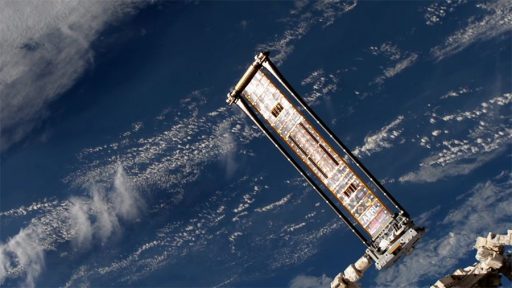
Heading off on its second mission, Dragon performed admirably, arriving at ISS two days after launch for a robotic capture and berthing to the Harmony module. The craft’s four-week stay at ISS was extremely busy – inside and outside the Station as plenty of internal payloads had to be dealt with by the crew while the Station’s robots spent the better part of Dragon’s stay handling the three external payloads, two of which found a home on the Station’s truss to provide ISS with a new articulated Earth observation bench and a high-fidelity X-ray telescope studying ultra-dense Neutron-Stars. ROSA – the Roll Out Solar Array completed a week-long demonstration mission before being jettisoned overboard when its locks failed to re-engage at the end of the test.
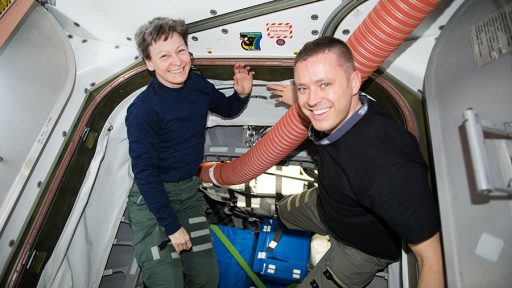
Riding uphill on the Dragon was a group of 40 lab mice, participating in a study of a novel drug that promises to stop or even reverse bone loss incurred by Astronauts spending extended periods in space and patients suffering from Osteoporosis on Earth. Twenty of the mice returned on Monday as the first live return of animals under the Rodent Research Program while the other twenty will be kept aboard ISS for another five weeks before being euthanized and returned at a later date.
The Dragon also returned with the Fruit Fly Lab-2 experiment that includes thousands of flies acting as model organisms to look into changes in heart function caused by exposure to microgravity. Four powered Polar freezers were installed in the Dragon for return, holding hundreds of sample tubes as Dragon missions are a welcome opportunity to empty the Station’s laboratory freezers that hold everything from crew members’ bodily fluids and rodent organs to plant parts.
>>Dragon SpX-11 Cargo & Science Overview
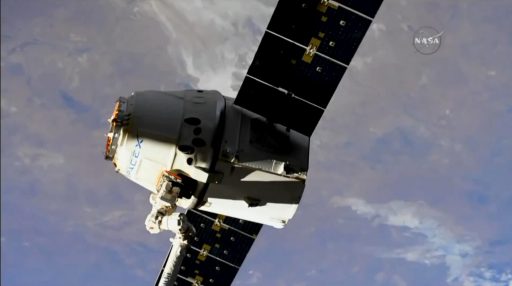
Final cargo items were loaded into the Dragon over the weekend and USOS crew members Peggy Whitson and Jack Fischer buttoned up the spacecraft on Sunday, closing the Dragon hatch and moving through the vestibule outfitting task to remove power/data jumpers and install drive mechanisms for the berthing mechanism bolts. Once the Harmony hatch was closed, the cavity between Dragon and ISS was depressurized for a period of leak checks before ROBO controllers in Houston and Saint-Hubert received clearance for the craft’s unberthing.
Dragon was demated from Harmony by releasing four sets of four bolts and four capture latches, giving Canadarm2 full control over the spacecraft for a slow maneuver away from Harmony and then into the release position ten meters below the complex. The craft was kept in the release position overnight and Whitson and Fischer assumed control of robotics after an early wake up on Monday to put in motion final preparations for releasing the spacecraft.
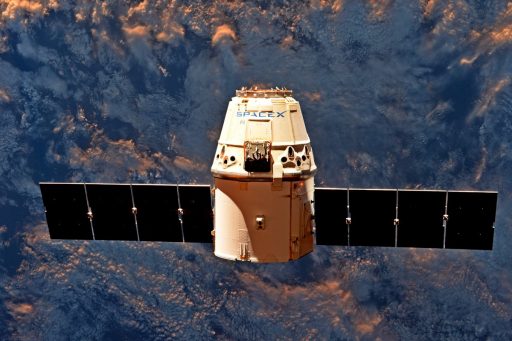
The snares of the arm’s Latching End Effector opened at 6:41 UTC and Canadarm2 was retracted to a safe distance for Dragon to re-enable thruster control for a pair of departure burns accelerating the spacecraft down the R-Bar, or radial vector, taking the vehicle out the ISS Keep Out Sphere. The third and largest departure maneuver placed Dragon on a prograde trajectory, pulling out in front of ISS to open up a gap of around 150 Kilometers to set the stage for the rocket-powered braking maneuver.
Dragon’s green-and-red navigation lights quickly faded as the craft headed into orbital night for five hours of free flying dedicated to final deorbit preparation such as the closure of the GNC Bay Door to shield Dragon’s star tracker and proximity navigation sensors from the heat of re-entry. With Dragon out of the ISS Approach Ellipsoid, NASA involvement in the mission ended and SpaceX’s Control Center in Hawthorne was in full control of Dragon’s return to the planet.
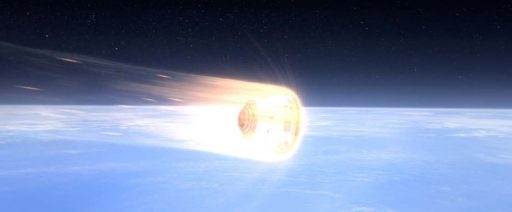
To set its homebound course, Dragon fired its Draco thrusters for around ten minutes to slow down by some 100 meters per second, enough to drop the craft out of orbit with re-entry targeting a precise location to enable Dragon to reach its landing area. Around four minutes prior to entry interface, Dragon jettisoned its disposable Trunk Section that is not equipped to survive re-entry. The sole disposal item in the trunk for the SpX-11 mission was the Active Flight Releasable Attachment Mechanism that once held the ROSA solar array that was jettisoned into orbit to undergo a natural decay towards a fiery re-entry.
Encountering the dense atmosphere, Dragon’s PICA-X heat shield had to endure temperatures up to 1,600 degrees Celsius and Dragon constantly modified its lift to optimize the flight path toward the planned parachute opening target. Having slowed to a subsonic speed of 240 meters per second, Dragon deployed two Drogue Chutes around 13.7 Kilometers in altitude followed by the large main chutes at around three Kilometers to slow the vehicle down to under 20 Kilometers per hour for splashdown.
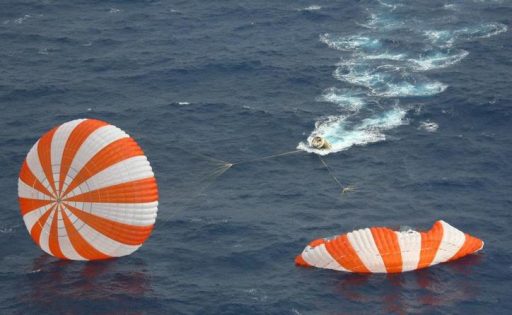
SpaceX confirmed the landing via Twitter, declaring the first re-flight of Dragon a success.
As is typical for Dragons returning valuable ISS science, landing marks the beginning of a race against time as SpaceX aims to get the spacecraft out of the water and on the way back to shore as quickly as possible to be able to ship time-critical cargo back to NASA within 48 hours of splashdown. The time-critical samples and experiment materials will be flown back to Houston and other institutions as soon as they arrive on shore, using the Port of Long Beach to welcome the Dragon back on land.
Per current planning schedules, the next two ISS visiting vehicle events will occur on the Russian side with Progress MS-05 expected to depart the complex on July 20 after a five-month stay followed on the 28th by the launch and docking of the Soyuz MS-05 spacecraft bringing Sergei Ryazansky, Randy Bresnik and Paolo Nespoli to ISS – all three of them being return visitors. The next SpaceX Dragon mission is targeting liftoff No Earlier Than August 10, though ISS schedules are never set in stone and dates can move in a fluid manner.

